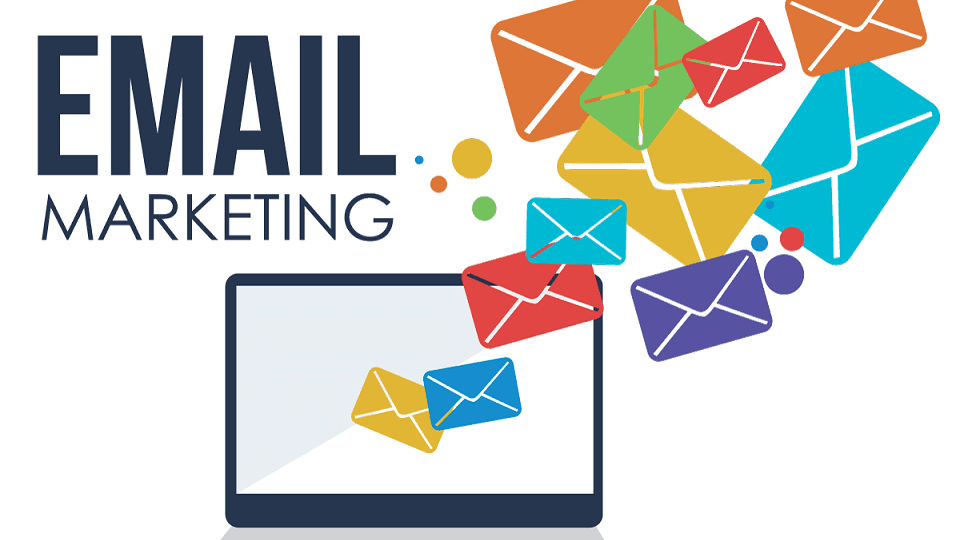 Many retailers find themselves in the midst of urgent business situations facing the various phases of COVID-19 recovery. Now’s a time where they need to create personalized digital touch points in order to make up for the lack of brick-and-mortar shopping and physical visibility. So how are brands maintaining conversations with consumers? Through an email first approach.
Many retailers find themselves in the midst of urgent business situations facing the various phases of COVID-19 recovery. Now’s a time where they need to create personalized digital touch points in order to make up for the lack of brick-and-mortar shopping and physical visibility. So how are brands maintaining conversations with consumers? Through an email first approach.
During times of business disruption, retailers are turning to email as a primary marketing channel because of its effectiveness in an overall marketing strategy. For every $1 spent on email, businesses earn $42. Simply put, the ROI is unmatched because customers are asking for the touch point by opting in, unlike paid social or digital advertising campaigns. Also, through an advanced targeting strategy such as reaction-based drip campaigns, information like a digital shopping cart reminder, coupon or corporate social responsibility (CSR) initiative can be sent to a customer at the perfect moment.
Email gives brands needed flexibility in the midst of our current environment as well. It’s a fluid situation and changes rapidly. Email gives brands the ability to remain flexible with state guidelines and roll with the necessary changes. Additionally, many pending announcements outside of just the unknowns of brick-and-mortar location reopenings, like school schedules in relation to retail back-to-school selections, have marketers mapping out multiple scenarios.
Because of its ROI, during times when companies are adopting an omnichannel marketing approach it makes sense to put more resources towards email marketing. Email is a reliable strategic asset in this environment. It’s accessible. It’s real-time. It’s measurable. Insights gained can also be used to make improvements not only in email but in a brand’s entire marketing mix. Therefore, it’s extremely important retailers realign email messaging and turn to traditional best practices.
Key Message Visibility
In email marketing, brands should get right to the point in terms of both messaging and design. Brands want their key messages at the forefront of their content. Make sure images don’t distract from key messages, but rather reinforce them and engage recipients.
A vital step in the email marketing process is pre-send testing. Emails with a heavy lean toward design and imagery, rather than text-based, require a thorough testing process — because, what good is an email if you can’t view it? Brands need to test emails, including calls to action and form fills, to ensure they’ll be viewable from every device and browser.
Another email marketing tactic brands don’t utilize enough are GIFs and video. If emails are overfilled with content and imagery, a GIF short video included in an email can get messaging across quickly and easily. Plus, it’s incredibly engaging for customers. But like anything, it shouldn’t be overused as it can take away from the call-to-action.
Calls-to-action need to be simple, clear, intuitive and drive the conversation. Recipients are more likely to complete a call-to-action if there are only one or two crucial actions to choose from, and they’re meaningful. Also, while global crises persist, promoting unnecessary calls-to-action and secondary messages comes across as disingenuous and deceitful. The best thing email marketers and retailers can do right now is include phrasing, messaging and especially calls-to-action that drive a specific conversation forward, eliminating points of friction for customers.
Engage Quickly And With Understanding
While we’re adjusting to our current situation, be mindful of who you’re targeting. At the beginning stages of the pandemic, engaging stakeholders with empathy was of the utmost importance.
Now, entering phase two, empathy and authenticity are what’s most important. Customers appreciate it, so brands should adjust marketing strategies to fit the right tone, because it’s necessary for brands to still connect with consumers. They shouldn’t slash their marketing budget or hold off on personalized messaging, but instead understand the current digital marketing environment we’re in right now. Everyone is busy, over-inundated with touch points, and doesn’t have the time to look through generic content. Maintain relevant, personalized messages, but make sure you are getting straight to the point. Emails should resonate with customers and highlight a tone of understanding and authenticity, and not one of capitalization.
Brands also need to ensure the segments they’re sending a notification or update to are targeted, so they won’t be viewed as an unnecessary touch point. It’s imperative to be mindful. For example, many retailers have been updating customers of store closings and reopenings. It’s best to segment by geolocation so those impacted are the only ones receiving the message.
All businesses and retailers need to double-check their automated and triggered emails, analyzing how they might impact and resonate with recipients now. When taking a step back, it’s best to ask: considering recent developments, can any messaging come across as insensitive? The last thing a business needs is a previously written message hitting its audience without further examination and coming across as deceitful or dishonest.
Brands need to realize email campaign success comes from testing more emails, so they can send more emails that will best resonate with their target audience. They also need to always engage with both empathy and authenticity, creating genuine, human-to-human connections.
Though we’re in the midst of global crises, there are always tactics marketers can leverage to ensure they’re optimizing their email marketing campaigns and strategy. It’s an extremely important aspect of a marketing mix, so brands need to make sure they’re creating compelling, relevant and personalized digital experiences for their customers without sending inappropriate messages. With powerful ROI, customers can be updated quickly and efficiently, while brands move towards adjusting to the new marketing landscape.
Melissa Sargeant is CMO at Litmus, where she runs worldwide marketing initiatives including corporate and product branding, demand generation, product marketing, public relations and event management. Prior to Litmus, Sargeant was CMO at customer experience leader SugarCRM and at e-Commerce innovator ChannelAdvisor (ECOM). With more than 30 years of marketing experience in the tech sector, she has expertise in SaaS go-to-market strategy and execution, customer success, digital demand generation, and branding. Sargeant also held senior marketing roles at Avalara, CA Technologies (Computer Associates), Digitalsmiths – A TiVo Company, Bluefire Security Technologies and Guardent (VeriSign).




